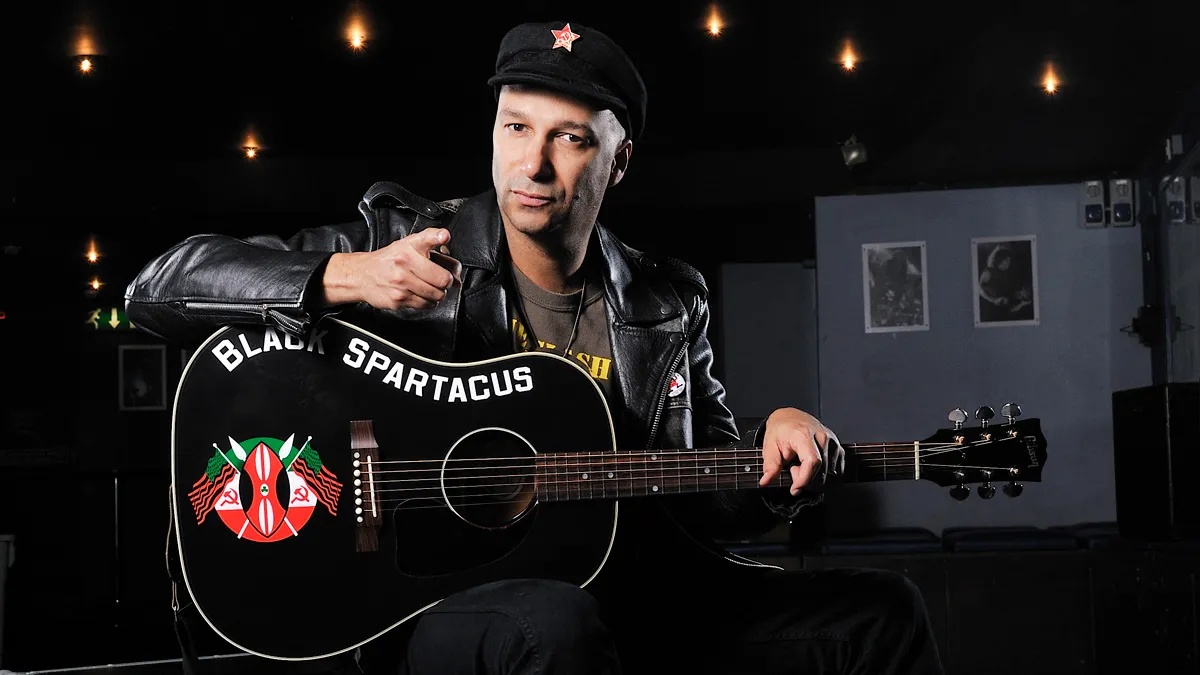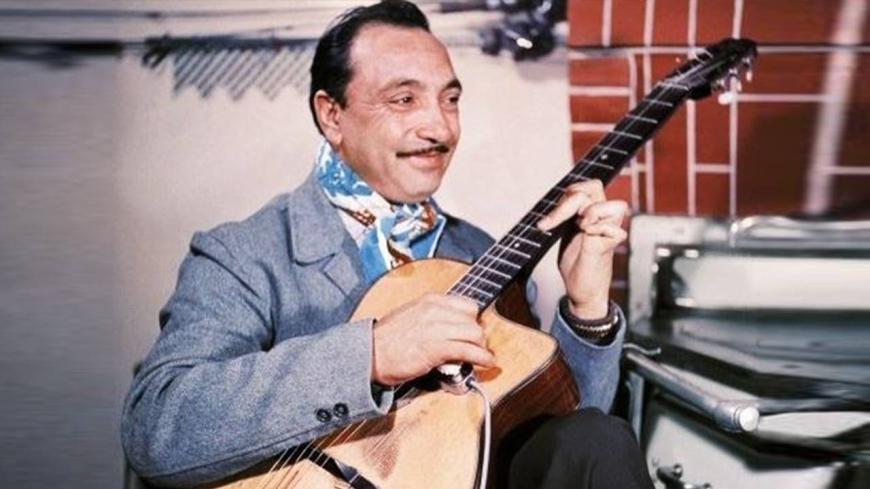Taylor Swift fans love her songs because of their catchy melodies, relatable lyrics, and basic structures. And that’s what makes them great songs for a guitar beginner to learn.
So, I decided to take a closer look at 4 of Taylor’s Swifts most popular guitar songs and teach you exactly how to play them, including chord and strumming patterns for each section, plus other tips that will make them sound the way Taylor plays them.
The songs will get steadily harder as we go through them, but all you need to play most of them are root versions of A, Am, C, D, Em, and the G chord. I’ll also introduce you to some interesting variations on the basic chords that Taylor uses, before moving on to a song that contains one of the harder chords, F.
So at the end of this article, you should know 4 easy Taylor Swift songs to play on guitar.
Strumming Patterns
Before we get started here is a brief explanation of how to read strumming patterns.
A 4 beat bar can be split up into the four main beats – 1, 2, 3, 4. These can either be played as a downstroke (D) and upstroke (U), or not played at all (rest). Therefore, a bar of 4 downbeats would look like this – D D D D. And a bar containing a downbeat followed by an upbeat, followed by a downbeat, followed by an upbeat would look like this – D U D U.
We can also add additional beats in between the four main beats, therefore the 4-beat bar would now be 1 + 2 + 3 + 4 +. These additional strums could either be downstrokes (d) or upstrokes (u). Therefore a bar containing 4 downstrokes on the beat followed by an upstroke at the halfway point between each beat would be:
1 + 2 + 3 + 4 +
D u D u D u D u
This probably sounds very complicated, but you’ll soon get the hang of it. Plus, don’t worry, I’ll try and simplify the rhythms as much as possible but still make them sound like the song.

And on the subject of songs, let’s jump into learning our first Taylor Swift song on guitar…
1. We Are Never Ever Getting Back Together
Let’s look at how to play “We are never getting back together” by Taylor Swift, a fun breakup song to learn.
Chords: C, G, D, Em
Intro
C – G – D – Em
This has a quirky rhythm at the start so I suggest just strumming the basic chords on the first beat of the bar for now and then we’ll get the rhythm going when the chorus starts.
Taylor actually plays a Csus2 instead of a C chord and a Dsus4 instead of the D for the whole song, as well as in a lot of her other songs. Neither of them are difficult chords to play, Csus2 is like a G chord but with the first two fingers down a string. Dsus4 is a D chord with your little finger on the 3rd fret of the high E string.
But if you haven’t learned either of them yet, don’t worry, playing the song with standard C and D chords will sound ok, then you can play it using the more complex versions of the chords after you get the hang of it.
Verse
C – G – D – Em
Single strums for the 1st verse, then for the other verses use this rhythm pattern or a combination of both:
D D DuD
Chorus
C – G – D – Em/D
Rhythm
D D D Du D D D Du
D D D Du D Du D Du
2. Our Song
Let’s look at how to play “Our Song” by Taylor Swift.
Chords: D, Em, G, A
Next, we have one of Taylor’s fun, upbeat tracks that again features the same simple chord progression in the verse and the chorus.
Intro and Verse
D / Em – G / A – D / Em – G / A
The verse (and intro) has a jumpy feel, which will take a little practice to get right. It will help if you emphasize the first two beats, and then play the down-up-down section of the rhythm a little quieter. This is also the same rhythm you used in the first song, ‘We Are Never Ever Getting Back Together’, so you should be familiar with it by now.
D D DuD
The ‘/’ between two chords, i.e. ‘D / Em’ indicates that you play both chords within the same bar. Therefore you play the ‘D D DuD’ rhythm on each chord, so the rhythm is therefore played twice in each bar.
Chorus 1
D / Em – G / A – D / Em – G / A
D / Em – G / A – G – A
Em – G (stop and let the G chord ring)
This looks quite easy, but after playing the standard chord progression of D – Em – G – A three times using the same strumming pattern as the verse, you now need to play G for a full bar using all downstrokes, then the same for A, then Em, before stopping on the final G chord of the chorus.
This can be quite confusing for beginners because you get into the rhythm of the song and then have to play chords for twice the length that you have got used to. As with everything on the guitar, it’s all down to practice, so if you are struggling, slow down and play it perfectly at a speed that you can manage, then gradually increase the speed until you are playing along with the song.
Chorus 2
D / Em – G / A – D / Em – G / A
D / Em – G / A – G – A
Em / D – G / A
You can use the same strumming pattern as the verse in the chorus if you like, but play it a bit louder. As you improve you can vary it by slightly muting the strums during the verse, then play the chords open to make them stand out in the chorus.
Interlude with Violin and Guitar Solo
D / Em – G / A – D / Em – G / A – A
This includes an additional half bar of A (two additional beats) before the singing starts again and goes into the…
Post Second Chorus Bridge
Em – G – D / A – Em
G
Chorus 3
D / Em – G / A – D / Em – G / A
D / Em – G / A – G – A
Em / D – G /A
D / Em – G / A – D / Em – G / A
D / Em – G / A
Outro
D / Em – G / A
D / Em – G (stop and let the G chord ring)
3. You Belong with Me
Let’s look at how to play “You belong with me” by Taylor Swift.
(Guitar tuned down a semitone to Eb, Ab, Db, Gb, Bb, and eb)
Chords: G, D, Em, C
In order to play “You Belong with Me” along with the song or video you will need to tune each string of your guitar down a semi-tone. Therefore, instead of the usual E, A, D, G, B, e tuning, you need to tune the strings to Eb, Ab, Db, Gb, Bb, and eb. Most tuners and tuning apps have this function.
Many artists tune songs this way because they prefer the way it sounds, or because it lets them sing high notes that match their voices better.
Intro
G
Play a G chord for two bars until the singing starts
The intro is also played before the singing starts in each verse.
Verse
G – G – D – D
Am – Am – C – C
The easiest way to get this to sound like the song is to play a downstroke on each of the four beats of the bar and on the additional beats in between, ie:
D d D d D d D d
Even though this is quite simple, the song is at a fast tempo so you may need to keep practicing to get it up to speed. If it’s too fast for you, just play a downbeat on every beat instead of trying to include the additional strums in between the beats.
It also helps if you know how to palm mute, but that might be asking too much at this early stage of learning.
Bridge
Am – C – G – D
Am – C – D (stop and let the D chord ring)
During the bridge, each chord is only played for one bar, not two as in the verse.
1st Chorus
G – G – D – D
Am – Am – C (stop and let the C chord ring)
2nd Chorus
G – G – D – D
Am – Am – C – C
G – G – D – D
Am – Am – C – C
The chorus contains exactly the same chords, and in the same order as the verse, but they should now be strummed using the following pattern. It isn’t what’s played on the record but is good enough to get you going, and you should know it by now, we’ve used this rhythm in the first two songs.
D D DuD
As you improve, you can match the strumming pattern to be exactly the same as the one on the song.
Guitar Solo
G – G – D – D
Am – Am – C – C
Taylor Swift Songs that use the F chord
We’ll now move on to songs that contain a slightly harder chord that you might not know yet or have trouble playing, the dreaded F major.
4. All Too Well
Let’s look at how to play “All Too Well” by Taylor Swift.
Chords: C, G, Am, F
I’ll finish with a fan favorite that has a simple chord progression of C, G, Am, plus the dreaded F chord, which might be new to many of you. If you hate the F chord as many beginners do, then you can play an Fmaj7 chord which is a lot easier, but try not to play the low E and A strings.
However, you are going to have to get your hands around the F chord at some point. And the best way to master a new chord is to learn a song with a chord progression that contains chords you already know well plus the new chord you are learning, such as this one. This pushes you to try and change to the new chord quicker because you want to keep the song going.
But don’t try playing along with the song for a while, get the rhythm, then play through the chords at a steady speed that allows you to just about get the F chord into shape in time and it sounds ok (not all muffled). Then try speeding up slightly. If you can sing the song while playing that will help, but do it very slowly to start with then work up the speed as your F chord improves until you can play along with the song.
Rhythm
D D D D D D DuD
for the intro, and quieter sections
D D Du uD DuD
for the choruses
You can also mute the strumming a little in the intro, the interludes, and the beginnings of the verses if you have already learned this technique.
Intro
C – G – Am – F
C – G – Am – F
Verse 1
C – G – Am – F
C – G – Am – F
Interlude (no singing)
C – G – Am – F
Verse 2 and Verse 3
C – G – Am – F
C – G – Am – F
C – G – Am – G
F / G – Am / G
Be careful with the end of this Verse because the final two bars contain two chords, not one as in the rest of it.
Chorus
C – G – Am – F
C – G – Am – F
Interlude before the Chorus 3 (no singing)
C – G – Am – F
G – G
Chorus 3 and Chorus 4
C – G – Am – F
C – G – Am – F
C – G – Am – F
C – G – Am – F
F
Verse 4
C – G – Am – F
C – G – Am – F
C – G – Am – G
C – G – Am – G
Wrapping it Up
These are just some of Taylor Swift’s simplest songs for guitar, there are many more. So, once you can easily play all of these, move on to some of her slightly harder songs. Most of the chords that she uses are simple (or she uses easy-to-play variations) but the clever songwriting does mean that the structures of the songs can be confusing, as we have seen with some of the ones I have covered.
So, practice, practice, practice, and play along with the songs on Spotify, YouTube, or wherever you get your music until you can play them as well as Taylor does. Playing along with music is by far the best way to improve quickly, plus it’s a lot more fun than practicing a song without the music.


